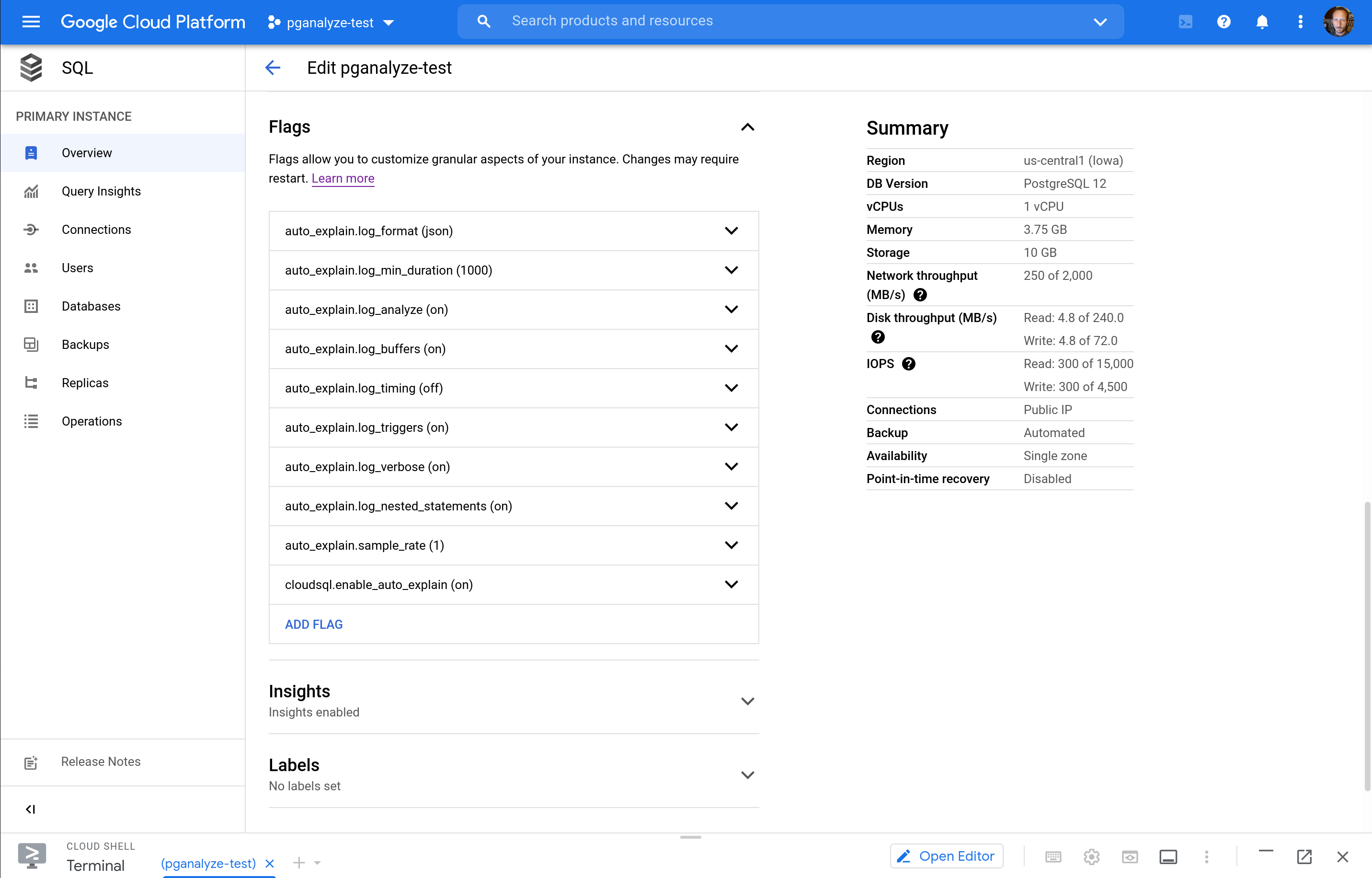Step 3: Review auto_explain settings
There are a number of auto_explain settings that allow you to configure which queries
will generate EXPLAIN plans. You can read the full Postgres documentation about
these here.
The right configuration will depend on your server and workload,
but we've found the following is a good starting point:
| Setting | Recommended |
|---|---|
| auto_explain.log_format | json |
| auto_explain.log_min_duration | 1000 |
| auto_explain.log_analyze | on |
| auto_explain.log_buffers | on |
| auto_explain.log_timing | off |
| auto_explain.log_triggers | on |
| auto_explain.log_verbose | on |
| auto_explain.log_nested_statements | on |
| auto_explain.sample_rate | 1 |
Summary of required changes
- auto_explain.log_format
- json
- auto_explain.log_min_duration
- 1000
Summary of recommended changes
- auto_explain.log_analyze
- on
- auto_explain.log_buffers
- on
- auto_explain.log_timing
- off
- auto_explain.log_triggers
- on
- auto_explain.log_verbose
- on
- auto_explain.log_nested_statements
- on
- auto_explain.sample_rate
- 1
Apply the settings above as Google Cloud SQL / AlloyDB flags for your database:

After you save the parameter group changes, proceed to the next step:
Proceed to Step 4: Test and verifyCouldn't find what you were looking for or want to talk about something specific?
Start a conversation with us →